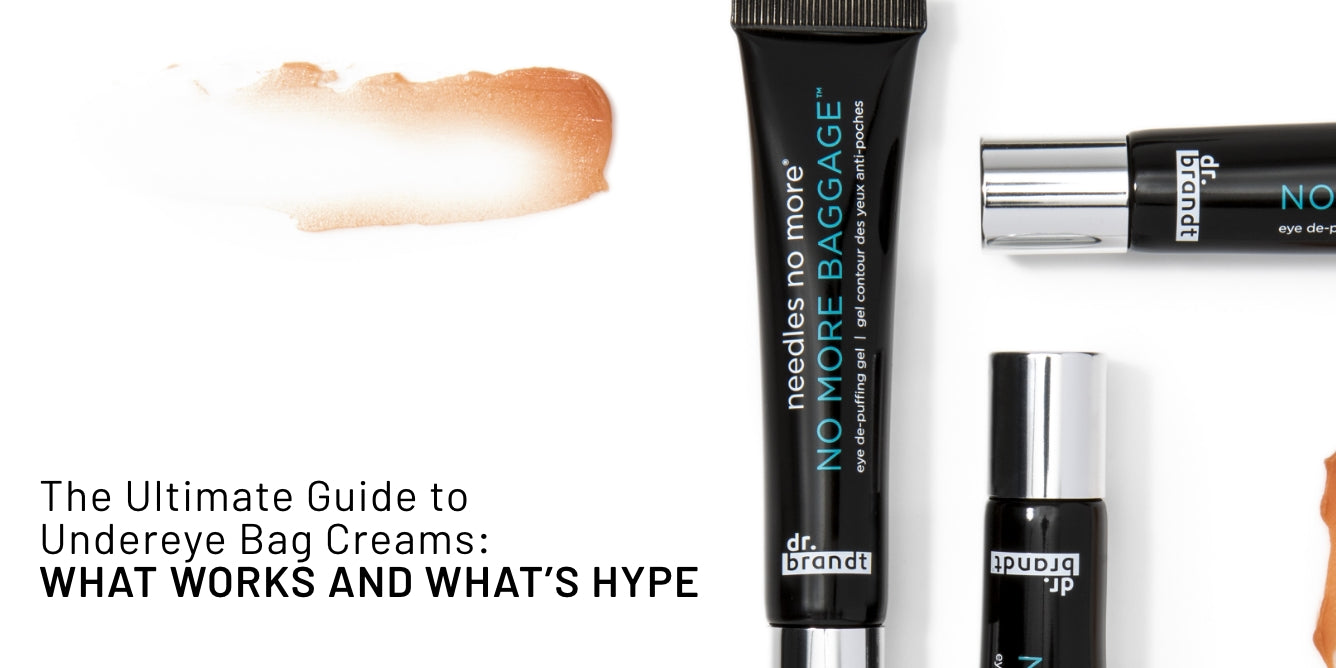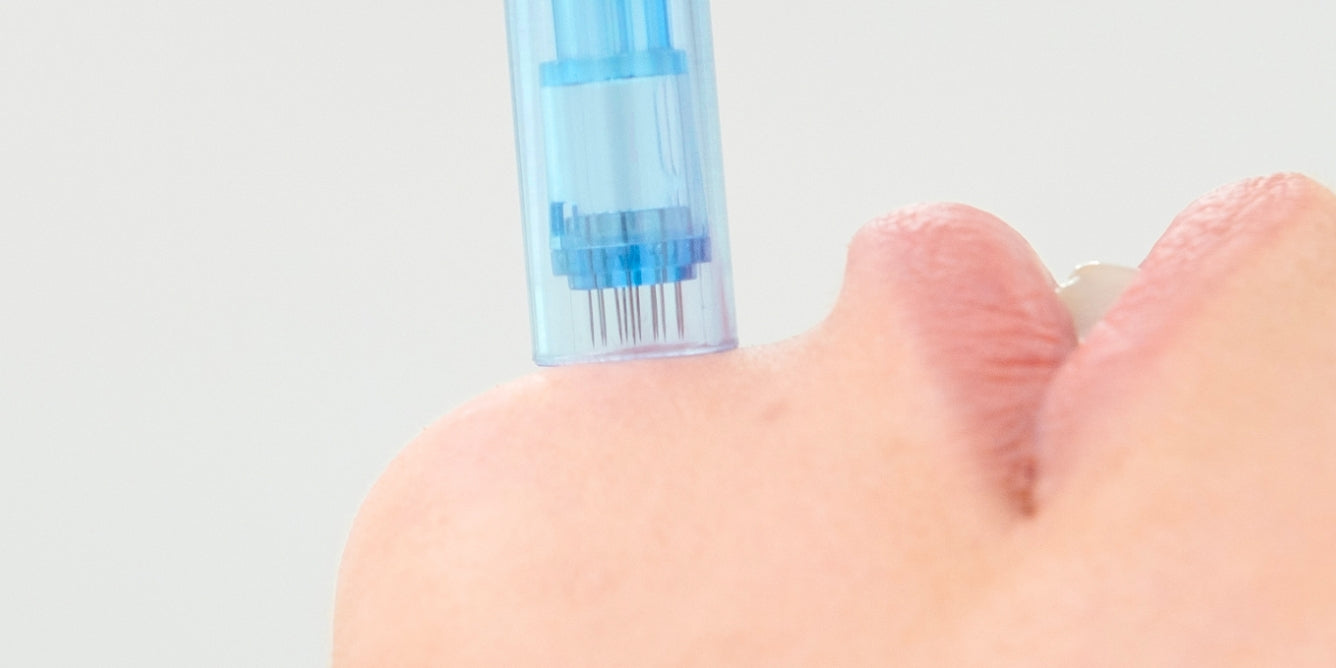
It’s easy to forget, but skin is our largest organ, protecting our body from environmental contamination, pollution, as well as infection. Skin is really our first line of defense against the outside world, and while keeping out contaminants is good news, there are some things—like your skincare ingredients—that benefit from your skin’s permeability. Skincare products that just sit on top of your skin’s surface aren’t doing much. To be effective, you need those actives to penetrate the deeper layers of your epidermis. Below, board-certified dermatologist Shasa Hu, MD goes over some of the key technology (or delivery systems, as they’re known in the industry) that’s helping make your products more effective, and offers tips on optimizing your skincare routine.
Understanding skin structure
Before diving into delivery systems, let’s go over how your skin is actually structured. Skin is made up of three main layers: the epidermis, the dermis, and the hypodermis. Each of these is in turn made up of more layers. The epidermis is by and large where most skincare actives are absorbed. It’s made up of five layers (or strata) including the stratum corneum on top, and a little deeper, the stratum granulosum. These are composed of skin cells, or keratinocytes, which are layered in a way comparable to bricks in a wall, with small spaces between them through which outside substances can seep. The dermis is the next layer, and the largest, and serves to support the epidermis. The vast majority of actives do not get this far (which is, for the most part, a good thing). That said, some ingredients, like retinoids, have been shown to slightly penetrate the dermis.
How skincare gets absorbed by your skin
Whether it’s hyaluronic acid, vitamin A, or an anti-aging serum, there are three main ways topical skincare ingredients penetrate the skin:
- The first or the most common channel is via the spaces between the keratinocytes. This is what we call intercellular penetration.
- The second way is when the active ingredient is able to bind to receptors on each keratinocyte, and essentially go through the cells, versus around them. This is called intracellular absorption.
- The last way active ingredients can enter our skin is via hair follicles. They’re present all over the body, and are tiny openings in our skin that play host to both coarse and vellus hair (AKA peach fuzz). Hair follicles provide much larger openings for active ingredients than the first two routes.
Skincare technology that’s improving absorption
In the skincare industry, ‘delivery systems’ refer to the mechanisms that enable active ingredients to penetrate into the deeper layers of skin. Let's talk about a few of my favorite technologies, which use modified molecules to provide better ingredient delivery.
Liposomal packaging
You know how oil and water don’t mix? This also applies to skincare: when a molecule is rich in lipids (think certain facial oils or moisturizers), it can get pushed away by the hydration that’s present in your normal skin cells. Liposomal packaging is a very smart way to transform molecules are that are ‘lipophilic’ (meaning water-repellent) into ones that can move through the skin rather than being repelled by it. In short, liposomal packaging helps create a much friendlier skin environment for fatty molecules, allowing them to penetrate more deeply.
Retinol Molecular Film Fluid and Microencapsulation
Dermatologists often recommend retinol to patients concerned about lines and wrinkles, or loss of firmness. The reason is simple: retinol is a scientifically-proven anti-aging ingredient, making it something of the gold standard in anti-aging care. However, not everyone can tolerate it for a couple of reasons: first, it has a tendency to cause irritation that can worsen inflammation. Second, retinol tends to have a short half-life, meaning it degrades quickly. Microencapsulation and retinol molecular film technology are two things that can both help slow the pace of retinol delivery to skin cells. Doing so helps minimize potential irritation, as well as ensure a slower release of retinol into skin cells, making it longer-acting.
Hydrogels
Hydrogel is another delivery technology that has really revolutionized the skin care industry. Hydrogel technology essentially involves the instant transformation of thicker, gel-like textures into a light, watery consistency. Because hydrogel technology often contains small molecules of hyaluronic acid, it’s excellent for keeping your skin hydrated and minimizing irritation. It can also promote greater pH balance.
Optimizing your skincare routine
As a regular consumer, this all may seem a bit confusing. Very simply, most skincare products have their own built-in delivery systems, which are often adapted to the specific active ingredients they’re charged with ‘delivering’ to your skin. They’re designed to help you get fast results from your skincare with minimal irritation. However, to truly get the most out of your products, I’d recommend educating yourself on two things: your skin type, and the different ways certain products interact.
An example: exfoliants, whether in the form of facial scrubs, microdermabrasion machines, or chemical exfoliants like glycolic acid serums help your skin shed dead skin cells, which can help increase the efficacy of your other products. But beware: certain products, like retinol, also have an exfoliating effect (which is often highly irritating to sensitivity-prone skin). As a result, you should go slowly before combining a retinol cream or serum with any type of exfoliant or acid, particularly AHAs and BHAs. Start with one and see how your skin reacts for a few weeks. If you don’t experience any irritation, you can try adding in the other.

In short, balance is key. Using too many skincare products together may reduce the effectiveness of their delivery systems, or cancel out certain benefits completely. Research your product combinations beforehand - and when in doubt, consult your derm!





Leave a comment (all fields required)